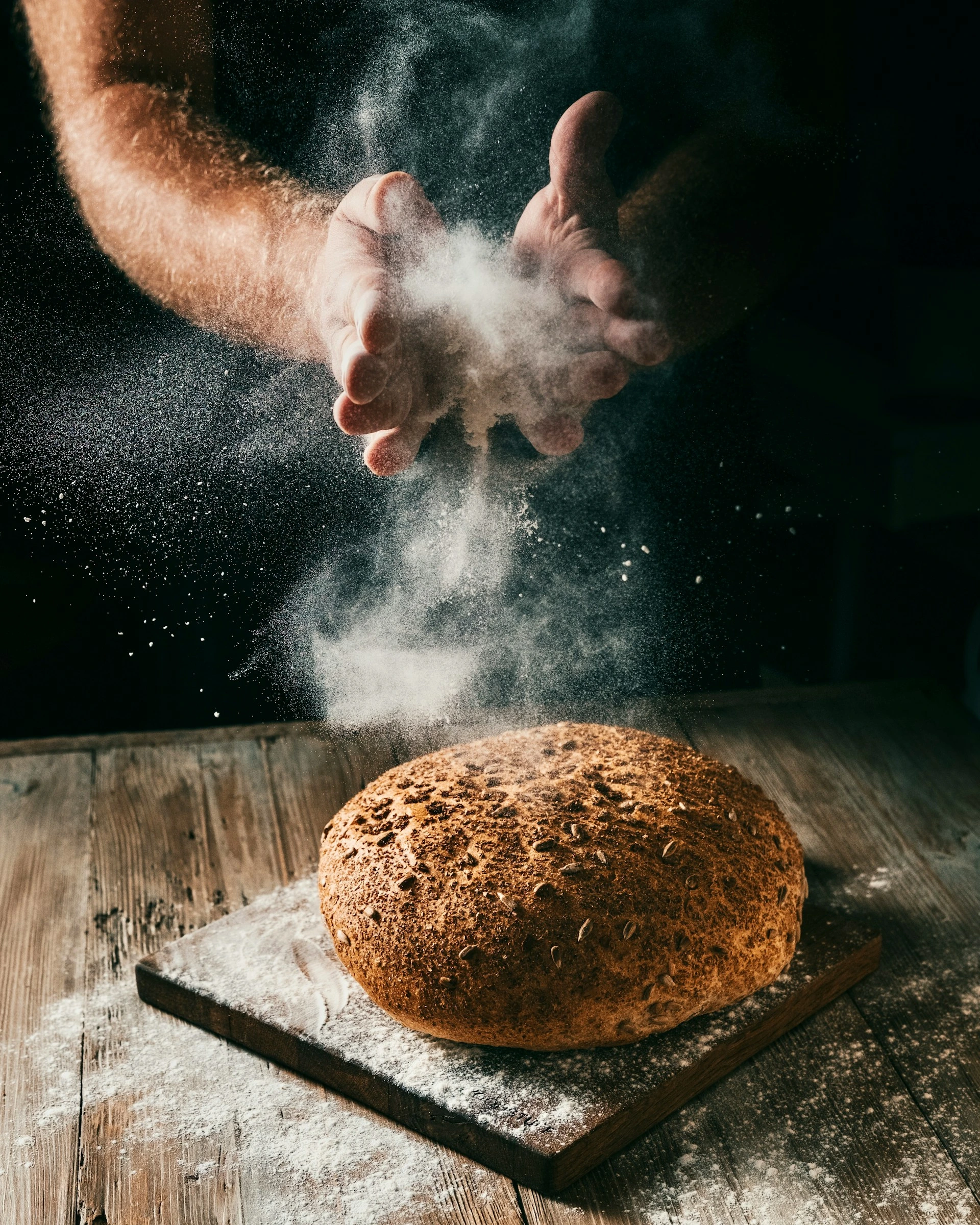The Ultimate Guide to Perfect Gluten Free Sourdough: Secrets, Starter Care, and Proofing Tips
table of content
Table of Contents
Have you ever missed the comfort of freshly baked bread — the rich aroma filling your kitchen, the satisfying crunch of the crust, the tender crumb inside — only to be held back by gluten restrictions? You’re not alone. The journey to making your own gluten free sourdough might seem daunting, but once you discover its secrets, you’ll realize this process is as rewarding as it is delicious. This guide walks you through every stage, from nurturing your starter to mastering proofing and baking — so you can enjoy real, wholesome bread again, with confidence and pride.
Understanding the Magic Behind Gluten Free Sourdough
What Makes Gluten Free Sourdough Different
Unlike traditional sourdough, gluten free dough doesn’t rely on gluten for structure or elasticity. Instead, it gets its rise from natural fermentation — a balance of bacteria and wild yeast that builds flavor and texture. This means every step you take, from choosing the right flours to proving the dough, affects how your loaf turns out.
Gluten free sourdough depends on the synergy between fermentation and hydration. With the right flour blend and patient care, you’ll create a loaf that’s airy, tangy, and nourishing.
Benefits of Gluten Free Sourdough Bread
When you bake gluten free sourdough, you’re gaining more than just a safe loaf:
- Easier digestion due to prebiotic-rich fermentation
- Naturally enhanced flavor and aroma
- Customizable flour blends suited to your preferences
- A clean-label bread without artificial gums or preservatives
Research shows that fermentation improves mineral absorption and gut health — making your bread not only tasty but also beneficial.
How to Make a Gluten Free Sourdough Starter
The starter is the living foundation of your bread. Caring for it properly ensures your future bakes are consistently successful.
Essential Ingredients and Tools
To begin, you’ll need:
- Brown rice, buckwheat, or sorghum flour
- Filtered water (avoid chlorinated tap water)
- A digital scale and a clear jar with a breathable lid
Ingredients Table
| Ingredient | Quantity | Notes |
|---|---|---|
| Brown rice flour | 50 g | Whole grain flour for richness |
| Filtered water | 50 ml | Lukewarm, room temperature |
| Starter culture (optional) | 1 tsp | Helps fermentation start faster |
Step-by-Step Starter Care Routine
- In a clean jar, mix equal parts flour and water until smooth.
- Loosely cover to allow airflow, then let it rest at room temperature.
- Feed with fresh flour and water every 24 hours for 5–7 days.
- By day six, your starter should show bubbles, a light tangy scent, and slight doubling in volume.
- If activity slows, place it somewhere warmer or switch to a more active flour like buckwheat.
Once it’s doubling predictably, your gluten free sourdough starter is ready for baking. Continue feeding it once daily if kept at room temperature, or once weekly when stored in the fridge.
Perfecting Your Dough — Flour Blends, Hydration, and Structure
Getting the texture right is where many new bakers struggle. The absence of gluten means you rely heavily on your flour mix and binders.
Balancing Your Flour Blend
An effective gluten free sourdough blend usually includes:
- Brown rice flour for structure
- Tapioca starch for lightness
- Sorghum flour for earthy flavor
- Psyllium husk for elasticity and binding
Flour Blend Example Table
| Flour Type | Percentage | Role |
|---|---|---|
| Brown Rice Flour | 40% | Adds foundation and mild flavor |
| Tapioca Starch | 30% | Contributes lightness |
| Sorghum Flour | 20% | Deepens taste |
| Psyllium Husk | 10% | Mimics gluten elasticity |
Hydration and Mixing Tips
Your dough will look wetter than regular bread dough — that’s normal. Avoid over-mixing; instead, stir until incorporated. Let it rest for 30 minutes before shaping to allow psyllium to form a gel-like network.
When baked, this method gives you an open crumb and springy texture, not the dense loaf that’s all too common in gluten free bread.
Proofing and Baking Gluten Free Sourdough
Optimal Proofing Techniques
Proofing time determines how much air, flavor, and chew your bread will develop. Gluten free doughs usually need longer and gentler rises:
- Let it proof for 6–10 hours at around 23°C–25°C.
- Avoid over-proofing, which leads to collapse.
- Look for slight dome-shaped rise and visible bubbles on the surface.
Cover your bowl with a damp towel to prevent drying, and use a glass or ceramic bowl for best results.
Baking for Best Crust and Crumb
Before baking, preheat your oven with a Dutch oven inside to 230°C (450°F).
Follow these steps:
- Score your dough gently with a sharp knife.
- Bake covered for 20 minutes to trap steam.
- Uncover and bake another 25–30 minutes until golden brown and crisp.
- Let it cool for at least 2 hours before slicing — this prevents a gummy center.
Your finished gluten free sourdough should have a thin crisp crust, moist crumb, and subtle tang. Once cooled, store it wrapped in parchment or freeze in slices for convenience.
Common Gluten Free Sourdough Mistakes (and How to Fix Them)
Every baker experiences setbacks. The key is knowing what to change next time.
| Problem | Likely Cause | Solution |
|---|---|---|
| Dense or flat loaf | Under-proofing | Allow longer fermentation |
| Gummy interior | Overhydration or short bake | Reduce water, lengthen bake time |
| No rise | Weak starter | Feed starter twice a day for two days |
| Overly sour | Extended fermentation | Discard half the starter and refresh |
By observing and adjusting, you’ll improve your loaves with every bake.
Creative Variations for Gluten Free Sourdough
Once you master the basics, you can start personalizing your creations:
- Add rosemary and olives for a savory Mediterranean loaf.
- Try seeded multigrain gluten free sourdough with flax, chia, and pumpkin seeds.
- Sweeten up with cinnamon raisin or apple walnut versions for breakfast options.
Each variation follows the same fermentation base, giving you endless creative freedom with flavors and textures.
Frequently Asked Questions About Gluten Free Sourdough
What is the best flour for gluten free sourdough?
A mix of rice, tapioca, and sorghum offers the best balance of strength and softness. Add psyllium husk for elasticity.
Why isn’t my gluten free sourdough rising?
Your starter may need more feedings or warmer temperatures. Dough that’s too dry or cold won’t ferment properly.
How long should I let gluten free sourdough proof?
Proofing usually takes between 6 to 10 hours depending on temperature. Use visual signs — gentle doming and bubbles — as your cue.
Can I make gluten free sourdough without psyllium husk?
Yes, but alternatives like chia or flaxseed meal won’t produce the same stretchy structure. Expect a slightly denser texture.
How do I store my gluten free sourdough starter?
Keep it in a covered jar in the fridge and feed weekly. Before baking, bring it to room temperature and refresh it once.
Conclusion — Embrace the Art of Gluten Free Sourdough
Baking gluten free sourdough may take patience, but the satisfaction of cutting into a loaf you crafted from scratch is incomparable. Each step teaches you balance — hydration, timing, and care — bringing you closer to consistently beautiful bread.
Start experimenting today, feeding your starter and adjusting your proofing routine. With time, your confidence will rise along with your dough.
Now it’s your turn — grab your ingredients, start your starter, and let the aroma of warm, fresh gluten free sourdough fill your home. Share your results, learn from each bake, and enjoy every slice!

